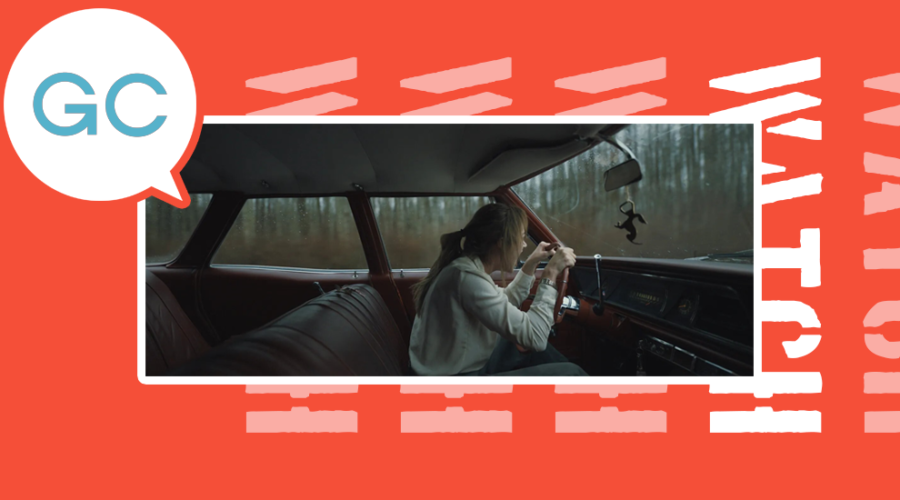Some films tread gingerly around the edges of horror, harassing the audience with hints of dread before retreating to the safety of the familiar. Longlegs, however, is not one of those films. Director Osgood Perkins, a modern master of psychological horror, drowns us headfirst into the abyss with his latest offering, a chilling descent into a world where the monstrous is disturbingly human.
From the moment the opening credits roll, Longlegs establishes itself as a film that refuses to play by conventional rules. The screen is bathed in an unsettling pallor, as if the very colour has been drained from reality. This visual choice is more than mere aesthetics; it sets the tone for a narrative that thrives on myopic ambiguity, drawing the viewer into a state of uneasy anticipation. Perkins’ hand is steady, and his vision is clear: this is not just a horror movie, but a meditation on the darkness that resides in all of us.
The film introduces us to Longlegs (an unrecognisable Nic Cage), a reclusive and deeply disturbed man whose past is shrouded in mystery. Longlegs is a character who could easily have been reduced to a one-dimensional figure of terror, but in Cage’s masterful leftfield choices, he becomes something much more complex. There is a vulnerability to his madness, a sense that beneath the layers of psychosis lies a man who was once ordinary, perhaps even kind.
It is this duality that makes Longlegs so pathetic, so terrifying; he is not a monster born but a monster made.
We follow FBI Agent Lee Harker (Maika Monroe), tasked with tracking down the elusive Longlegs. Harker is driven by a personal tragedy that Perkins wisely leaves largely unexplored, allowing the audience to fill in the blanks with their own fears and insecurities. Monroe delivers a riveting performance reminiscent of the cool aloofness displayed by Chloë Sevigny, both restrained and deeply affecting. Harker is uncomfortable amongst the living but right at home with the dead, capturing the quiet desperation of a woman who has seen too much but is still compelled to seek answers, no matter the cost.
The psychological battle between Longlegs and Harker is the film’s narrative drive, but Longlegs is not content to rest on the laurels of genre conventions. Perkins infuses the story with a sense of existential dread, exploring themes of guilt, identity, and the inescapable nature of one’s past. The film’s title, Longlegs, serves as a metaphor for the way our darkest impulses stretch out before us, leading us down arachnid paths we might not have chosen but cannot help but follow.
Elvis Perkins’ soundtrack as Zigli is a haunting blend of discordant notes and eerie silences, each one carefully placed to unsettle the viewer. The score does not merely accompany the visuals; it invades them, infecting every frame until the line between what is heard and what is felt becomes indistinguishable.
This auditory assault is complemented by the film’s sparse dialogue, where what is left unsaid carries as much weight as the spoken word.
Perkins’ direction is deliberate, surgical, as he dissects the psyche of his characters. He is a filmmaker who understands that true horror lies not in the external threats but in the internal struggles that we cannot escape, echoing the tragedy of his closeted father, the iconic actor Anthony Perkins, and his artist mother Berry Berenson who died on American Airlines Flight 11 during September 11.
This is not just a horror movie, but a meditation on the darkness that resides in all of us
Longlegs is filled with scenes that linger just a moment too long, forcing the audience to confront their own discomfort, the choices made by adults to protect children no matter what the moral cost. This pacing might frustrate viewers accustomed to the rapid-fire delivery of mainstream horror, but for those willing to engage with the film on its own terms, it is a masterclass in sustained tension. Dread clings to every frame, every inanimate object. Longlegs is an excruciating watch but all the better for it.
Visually, Longlegs is a study in contrasts. The cinematography by Andrés Arochi captures the stark beauty of the desolate landscapes, the wide shots emphasizing the isolation of the characters. The colour palette is muted, with subliminal flashes of red – the colour of blood, rage, and madness – violently juxtaposed against the grey and blue tones that dominate the film. Each frame is meticulously composed, the attention to detail creates a world that feels both dreamlike and nightmarish, a place where reality is constantly shifting beneath our feet and Harker’s.
Longlegs is not a film for the faint of heart. It is a disturbing, unflinching exploration of the darkness that lies within all of us, and the ways in which it can be unleashed by circumstance and choice. Yet, it is also a film that demands to be seen, if only for the way it challenges our perceptions of what horror can be. Osgood Perkins has crafted a story that is as much about the terror of the unknown as it is about the terror of knowing too much.
In the end, Longlegs leaves us with more questions than answers. It is a film that lingers in the mind, its images and sounds echoing long after the credits roll. Perkins does not offer easy resolutions because life, much like the film itself, is filled with uncertainties. We are left to ponder the paths we walk, the shadows we cast, and the lengths to which we will go to escape them.
And in that reflection, we might just find the true horror of Longlegs – that the monster we fear most might be the one staring back at us from the mirror.
Longlegs is a bold, unnerving film that pushes the boundaries of psychological horror. It’s not just a movie; it’s a dark dance with the shadows of the human soul and an instant classic.

